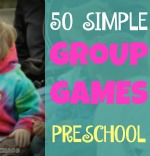Parts of Speech Videos, Lessons, and Activities for Middle School
Grammar, grammar, grammar. I write everyday. I have novels waiting for completion. I'll be honest; I can't remember or didn't learn most of these terms. However, I'm able to speak and write clearly. These parts of speech activities are targeted toward middle school and elementary students, but many adults will also find them educational too. Scroll down for our online lesson. Enjoy!This post contains Affiliate links.
We use these grammar activities in our daily homeschool classes. We don't focus on grade levels. We all (including mom) learn the same things at the same time. Everyone works at their own pace, so we try to find fun activities that all ages will appreciate. Writing an essay? Try this free grammar checker.
What are the parts of speech?
Now, play this Parts of Speech Game to test your knowledge.
What is a Subject and Predicate?
Take this quiz about Subjects and Predicates.
Review the Parts of Speech with Tim and Moby. You must be a BrainPOP subscriber for this one.
Did you know Yoda speaks perfect English?
What is a participle? Watch this video to learn about participles and gerunds. More about participles.
VERBALS: What is the difference between an infinitive, gerund, and participle?
Now, play this Past Participle Game to test your knowledge.
Want to be an English Major? Here is a more in depth look on gerunds, participles, and infinitives.
What are coordinate conjunctions? You use them in nearly every sentence.
What is a subordinate conjunction? It isn't as complicated as it sounds!
Be careful, this one tries to trick you, Compound Sentence Game.
Master your Proofreading Skills with this game from Quill.com
Why do you need to diagram sentences?
Diagramming Sentences (for BrainPOP subscribers only).
Online worksheet for review of types of sentences.
All done? Open a Google Document, and write a 5 paragraph story about your favorite animal. As always, tell me what you are going to tell me (first paragraph), tell me (detail each sentence from the first paragraph in the following 3 paragraphs), tell me again (summarize what you have written). While you are writing focus on the parts of speech. Include descriptive adjectives and adverbs, compound sentences, simple sentences, gerunds, infinitives, and participles. Share your paper with your homeschool educator or classroom teacher.
Recommended:
Using Adjectives and Adverbs in Poetry
Parts of Speech Grades 3-4 (Language Arts)
Schoolhouse Rock History Lesson
How to Use Parts of Speech, Grades 6-8




















